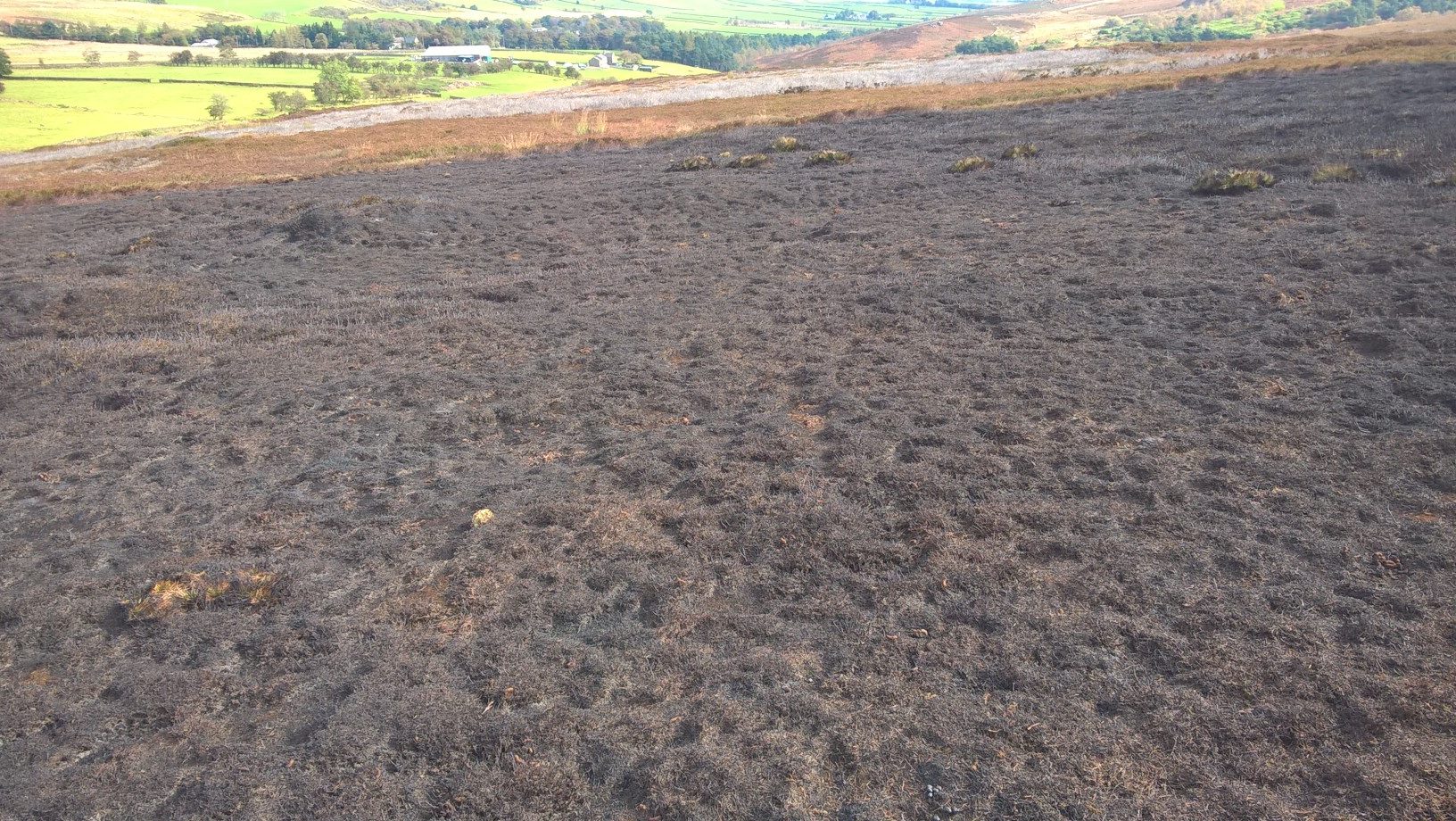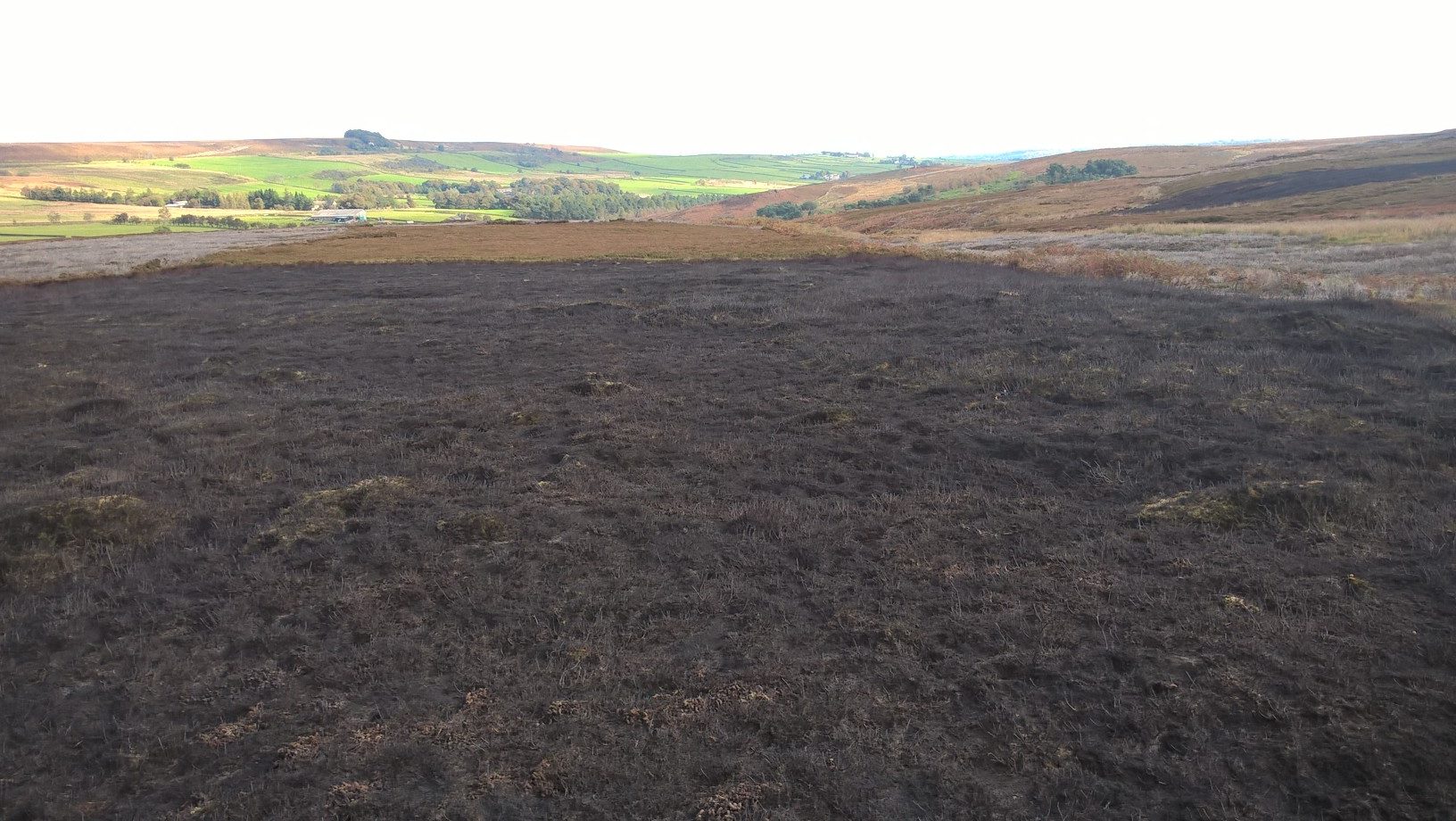It’s the burning season in our National Parks.
This scene is from the Peak District National Park, on an SSSI and in a Special Protection Area for Birds and is upstream of the Rivelin Reservoir where Yorkshire Water is spending £24m to improve Sheffield’s water quality (see here and here). Much of the catchment draining into the Rivelin Reservoir is managed for the sport of driven grouse shooting.
Burning like this is done to create conditions that favour unnaturally high densities of one species, Red Grouse, at the expense of other species. The grouse are favoured so that they can be shot for fun.
Heather burning can increase water treatment costs, flood risk and greenhouse gas emissions.
How much is grouse shooting costing Yorkshire Water’s customers? How much is it costing us all? And why won’t Defra answer these questions?
Heather burning has impacts on vegetation (I bet you could guess that from the images), invertebrates, reptiles, amphibians and birds.
[registration_form]


So the taxpayers subsidies the mega rich to damage the land in the first instance & then the public have to fork out extra again to treat the consequences of the damage. It’s an excellent idea the mega rich have devised! I wonder if Nick Clegg a Sheffield MP agrees?
Mark Are you suggesting that all burning of heath , even in small scale controlled conditions, is a bad thing?
Pete – no
Pete , could you name a context in which burning a nature reserve to a blackened wasteland is in any way positive to the environment ?
That’s a good question Gosia. Which British flora and fauna developed in an environment where regular wild fires assisted their survival? Given that the UK is the natural site of damp rain forest I would think they are few. I will of course bow to the greater knowledge of the ecologists among the commenters, being a mere engineer myself.
Mark – take a look at this. Sign of he times. Was it something we said?! http://www.caudwellandco.com/homes-for-sale/1160-win-hill.html
Have you compared the recovery time of controlled periodic burning with that of high fuel load uncontrolled burn Mark?
If you recall part of the concern over places like Mar Lodge was over the accumulation of fuel load with a high fire risk due to cessation of both burning and deer grazing, whereas some of the Southern England heathland fires have been catastrophic due to their scale (allied with fragmented habitat) and severity (an intense burn due to high fuel load taking many years to recover) as such many of the management organisations are looking back towards burning as less destructive than the alternatives (tractor cutting for example compacting unstable and sensitive soils, and leaving the problem of the cut material remaining as a fire risk, or depleting soil sutrition if removed)
Still, I’m sure we wouldn’t want to confuse the proles with complex arguments over benefits and drawbacks of different burning regimes, or how smoke enhances heather regeneration when there’s rich people to rant and rave about, would we?
Tell us Kie how did UK ecosystems manage before rotational burning? If many of these areas provide a major fire risk, might it be because they have been reduced – via burning – into a fire susceptible landscape in the first place? Yes if muirburn stops on grouse moors there may be a period where increased ‘fuel’ load means that fire would pose more of a danger. But let’s look at how we could get over this ‘hump’. Tree planting, along with firebreaks, blocking of drainage ditches and return of sphagnum will surely mean a far lower fire risk, and as heather becomes more of a component rather than dominant element of uplands ‘flammability’ of the landscape will be reduced. Re out of control fires well the estates have created that situation in the first place, pushing business as usual isn’t really the answer. We never really get real forest fires in this country which should tell you something. Bring back the tree and sphagnum.
Well, the first issue there would be that UK ecosystems prior to rotational burning were not heavily fragmented, whereby one big fire could end a connunity forever. Your proposition of tree planting would only make fires worse (again, look at the Southern England Heath fires as an example of this). ‘We never get “real” forest fires in this country’- agreed, to an extent, we still have major fires but the fact that they do not speak for miles is again largely reflective of that habitat fragmentation. Regardless, if you really think that development can be wound back to the ecosystem balance that we had prior to rotational burning then I would love to hear your plans, since to achieve it the moors couldn’t just be ‘rewilded’ in isolation, you would have to systematically dismantle all human developmental infrastructure on a landscape scale, from roads to villages to all farms and livestock.
Upland moors are generally in areas of high rainfall, in contrast to many southern lowland heaths, so they’re not comparable.
An element of re-wilding would be ‘re-wetting’ – stop digging new drainage ditches, block at least some existing ones and stop damaging the peat for a start. A degree of tree cover usually reduces surface temperatures, increases surface moisture levels and would be predicted to reduce fire risk.
As for the ‘systematically dismantle all human developmental infrastructure…’ bit – well, words simply fail me.
Sheffield is also planning to spend £83 on flood defences
http://floodprotectionsheffield.com/pages/sheaf-catchment-options
Rivelin forms part of the Don catchment. As you can see the proposals are mainly for downstream embankments etc for use as temporary dams. Upland management does get a mention but only as an option.
It’s common sense that water quality is poorer and water run off exacerbated byan accumulation of incinerated areas of bare peat . And it’s easy to see uplands with a continuous cover of vegetation including mosses will do much to reduce these problems.
£24 million for improved water quality and £83 million for flood defences – would the shooting community like to make a contribution here?
Bob – excellent point. Thank you.